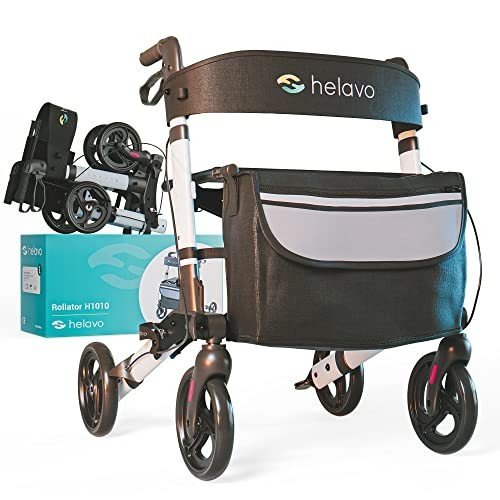10 Quick Tips About Handicap Walker

본문
Understanding Handicap Walkers: Types, Benefits, and Usage
Handicap walkers, also frequently referred to as mobility walkers or just walkers, serve as crucial aids for individuals with mobility difficulties. These devices provide physical support and stability, enabling users to stroll more with confidence and independently. This short article looks into the different types of handicap walkers, their benefits, and essential considerations when choosing one.
What is a Handicap Walker?
A handicap walker is a device developed to help people who have difficulty walking due to age, illness, or special needs. Walkers assist users maintain their balance, prevent falls, and recuperate mobility. Unlike walking sticks, which offer very little assistance, handicap walkers usually provide a wider base of stability, making them ideal for more substantial mobility challenges.

Kinds Of Handicap Walkers
Handicap walkers come in different styles, created to meet the unique needs of users. Below is a breakdown of the most common types:
| Type of Walker | Description | Suitable User |
|---|---|---|
| Requirement Walker | A lightweight frame that requires raising to move. Generally has rubber ideas for traction. | Those who can raise the walker and have moderate balance concerns. |
| Wheeled Walker | Functions two wheels at the front, enabling easier mobility without lifting. | Users who can keep stability and require more support while walking. |
| Rollator Walker | Similar to wheeled walkers but includes hand brakes and a seat for resting. | People needing a portable resting option with enhanced mobility. |
| Bariatric Walker | Particularly developed for heavier people, offering strengthened frames and larger hand grips. | Much heavier users needing extra support and stability. |
| Kid Walker | Custom-made models for kids to aid in their development and mobility. | Children with developmental hold-ups or mobility difficulties. |
Benefits of Using a Handicap Walker
Many users find that handicap walkers substantially improve their quality of life. Here are some benefits:
1. Increased Stability
Handicap walkers offer a sturdy assistance structure, which assists prevent falls and boosts users' confidence when moving around.
2. Improved Mobility
Walkers make it easier for people with mobility restrictions to browse stairs, irregular surfaces, and other difficult environments.
3. Self-reliance
Utilizing a walker enables people to carry out day-to-day activities separately, whether it's walking your home or shopping.
4. Pain Relief
Walkers enhance posture and distribute weight more equally, potentially alleviating discomfort in joints and muscles during motion.
5. Social Engagement
By facilitating mobility, walkers enable users to get involved more actively in social events, household gatherings, and community activities, promoting a sense of belonging.
Crucial Considerations When Choosing a Walker
Selecting the ideal handicap walker is essential for making sure safety and comfort. Below are crucial factors to think about:
User's Height: Walkers come in different heights. It's necessary to select one that allows the user to stand upright with a small bend in the elbows when keeping the deals with.
Weight Capacity: Assess the weight capacity of the walker, especially for bariatric options, to guarantee it suits the user's needs.
Portability: If the walker will be utilized frequently in various locations, consider models that can be easily folded or transferred, such as rollators.
Functions: Some walkers include additional functions like cushioned seats, storage baskets, and adjustable deals with. Assess which functions are most useful for the user.
User Preferences: The individual's comfort and preferences ought to likewise play a considerable function in the selection. Checking different designs may help identify the very best fit.
How to Use a Handicap Walker Effectively
Utilizing a handicap walker correctly guarantees safety and maximizes its benefits. Follow these actions for safe use:
- Adjust the Height: Make sure the walker is gotten used to the correct height for the user.
- Stabilize the Walker: Place the walker in front while guaranteeing all 4 rubber pointers or wheels touch with the ground.
- Use Proper Techniques: Move the walker forward about one step length, and then enter the walker while keeping the weight balanced.
- Preserve Good Posture: Stand straight and utilize the walker for support, not leaning exceedingly on it.
- Practice Regularly: Encourage users to practice walking with the walker regularly, helping to develop self-confidence and improve balance.
Frequently Asked Questions (FAQs)
1. What is the distinction in between a basic walker and a rollator?
Requirement walkers need the user to raise them with each action, while rollators have wheels and allow the user to press them forward without lifting. Rollators also normally consist of brakes and may have a seat.
2. Are handicap walkers covered by insurance coverage?
Protection for handicap walkers can vary based upon a person's insurance plan. It is recommended to examine with the provider for specific details relating to protection and any needed paperwork needed.
3. Can children use handicap walkers?
Yes, there are walkers designed particularly for kids that deal with their developmental requirements. It's vital to pick a design that is age-appropriate and supplies the necessary assistance.
4. How do I preserve my walker?
Routinely check the walker for wear and tear, consisting of the grips and wheels. Clean the walker as needed and guarantee all components are functioning appropriately for safety.
5. When is it time to stop using a walker?
This differs by individual. Users should consult with their healthcare supplier to evaluate mobility improvements and talk about whether transitioning to a various mobility aid or moving without assistance is appropriate.
A handicap walker can be a transformative tool for individuals with mobility difficulties, providing them greater stability, self-reliance, and boosted lifestyle. By comprehending the numerous types, benefits, and essential considerations in selecting a walker, individuals can make informed choices that line up with their distinct needs and way of life. Whether for rehab, aging with dignity, or managing specials needs, handicap walkers play a crucial function in promoting mobility and wellness.


댓글목록0
댓글 포인트 안내